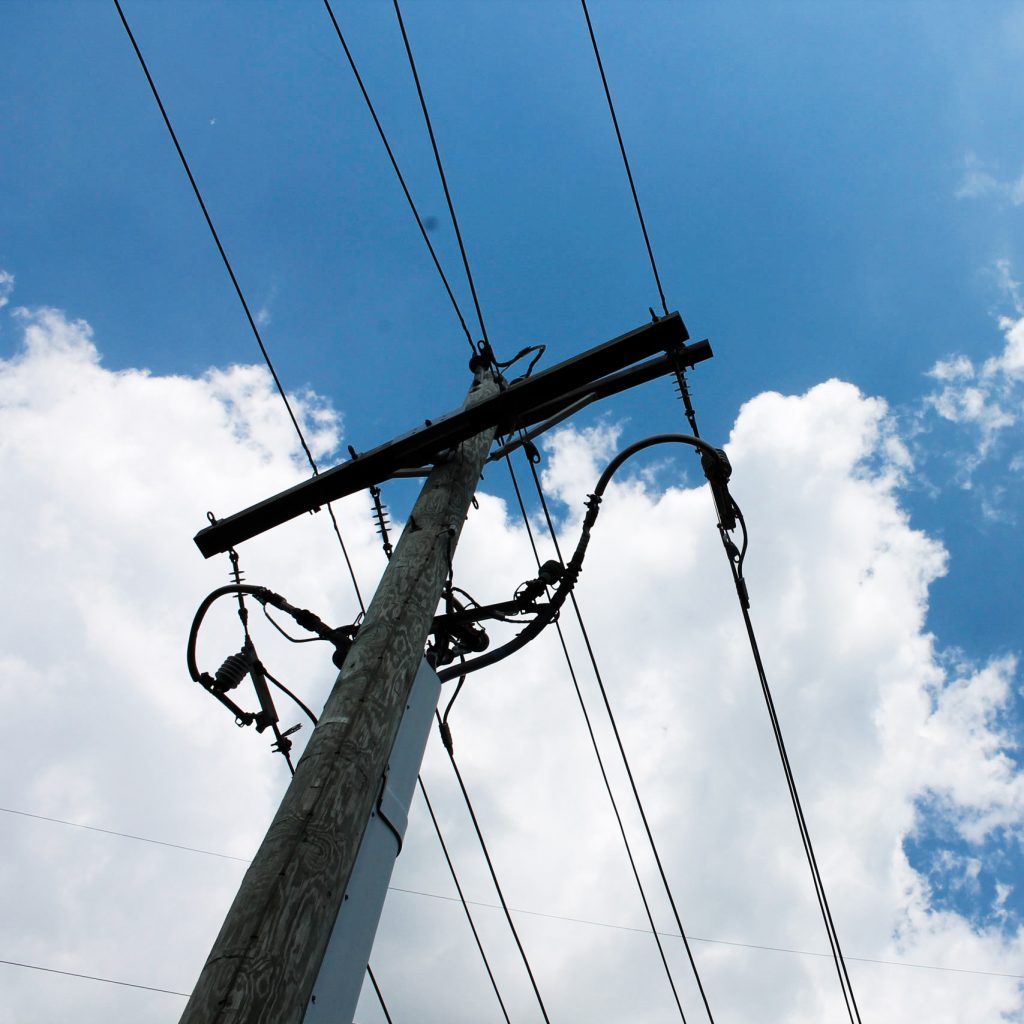Whether you’re on the job or working on an outdoor project around your home, you should always be aware of overhead electrical lines. Many workplace fatalities are caused by overhead power lines. Imagine how easy it is for us at home, who are not trained to avoid these obstacles, to run into danger!

“In a majority of cases, fatalities occurred in occupations with little to no electrical safety training,” said John Gasstrom, CEO of Indiana Electric Cooperatives. “That’s why we put so much emphasis on safety training and compliance education, not only for our cooperative employees, but our consumers as well.”
When working on an outdoor project, stay at least10 feet away from overhead lines. If your ladder or piece of equipment touches an overhead line, both you and the equipment can become a path for the electricity. Look up and out in front of you before using a ladder, large machinery, or a pool cleaning net. Even non-metallic ladders and equipment can conduct electricity.
Using large tools or machinery can make it harder to avoid overhead power lines. Always consider where power lines are before you begin a project. Scanning the area should be part of your plan from the start. Once you begin making safety part of your routine, it’ll become second nature when you run through your day-to-day electrical safety checklist.
If you’ve struck a power line and must get off the equipment, jump as far away from the equipment as you can and land with both feet together. No part of your body should touch the equipment and the ground at the same time. Hop or shuffle away from the equipment with your feet together to reduce the risk of electric shock.
If you come across someone who’s hit an overhead power line, stay away and warn others around to not touch him or her, or you could get shocked, too. Immediately call 911 and then contact your electric cooperative to turn off the electricity at your location.
If you know you’re going to be working near power lines, contact your electric cooperative so the experts there can properly inform you on safety precautions you should be taking in your area. Electrical safety is one of our top priorities for our consumers.
When should you look up for overhead power lines?
- Look upfor power lines when using tools of any kind,especially when trees are nearby. Branches can hide power lines from view. Even non-metallic tools can conduct electricity.
- Look upwhen using cranes or other lifting devices that approach working distance within 20 feet of power lines.
- Look upfor power lines when putting up scaffolding, framing a building, painting, pruning trees or picking fruit.
- Look upbefore moving a tree under a power line. Look up and determine the overhead clearance from the top of the tree. Trees can conduct electric current.
- Look upfor power lines when working on top of buildings.
Source: fpl.com
WORK AHEAD: Construction overhead power line safety
In 2016, 53% of all fatal electrical injuries occurred in the construction industry. Learn how to work safely near power lines with these simple steps:
- Locate all overhead power lines. The heights of the wires and distance from the worksite should be noted on site diagrams so workers and supervisors are aware.
- If work must be done near energized lines, contact [CO-OP NAME]for assistance.
- Ensure all workers keep conductive materials 10 feet away from unguarded, energized lines up to 50 kilovolts. For every 10 kV over 50, increase distance by an additional 4 inches of clearance
- Carry ladders and other equipment horizontally. Even non-metallic ladders can conduct electricity
- Lower equipment arms before driving and be aware of additional steps you may need to take if utilizing cranes or other lifting devices.
- Never spray water near power lines.
- Assume all power lines are energized and uninsulated. Do not use metal ladders near them.
- Train all workers in emergency communication and proper techniques for providing aid to someone after an electrical accident.
- Never touch or go near a person or equipment that is in contact with an overhead power line.
Source: Electrical Safety Foundation International (ESFI)


